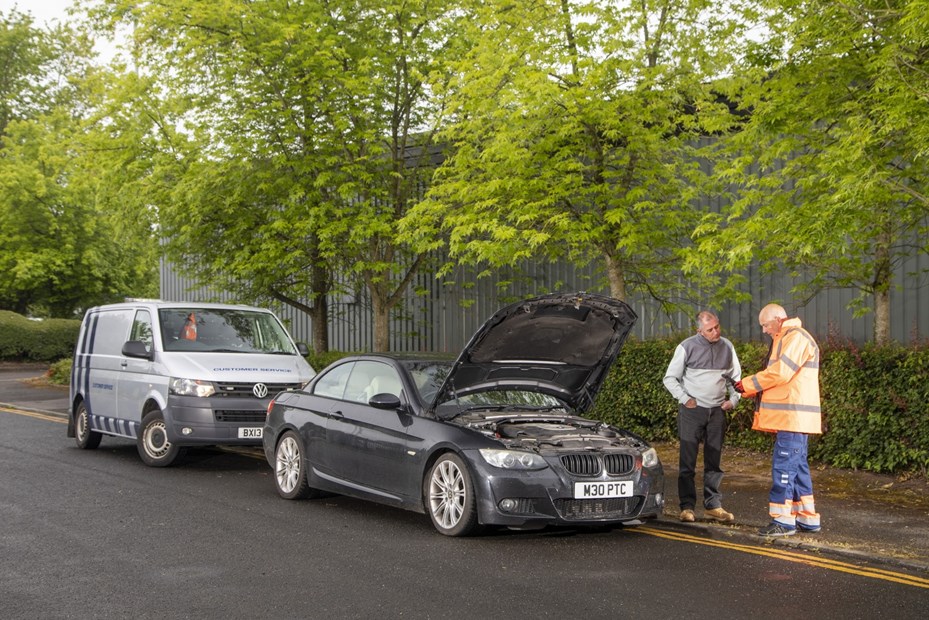There’s never a good time to experience a car breakdown, least of all when you’re actually driving along. It’s nothing but hassle and disruption, and potentially quite a dangerous situation to be in – especially if you break down on the motorway.
But there are things you can do to stay safe and minimise disruption to your journey and this article explains how. We’re going to explain how to react to a breakdown, where you can safely stop, how to summon help and suggest a few useful things to keep in your car that will help deal with the situation. But first, let’s consider why your car might break down in the first place.
Common causes of a car breakdown
There are innumerable reasons behind a car breaking down while driving. It could be an electrical issue, overheating, a clogged fuel filter, or running out of fuel. Flat or blown tyres also count as a breakdown.
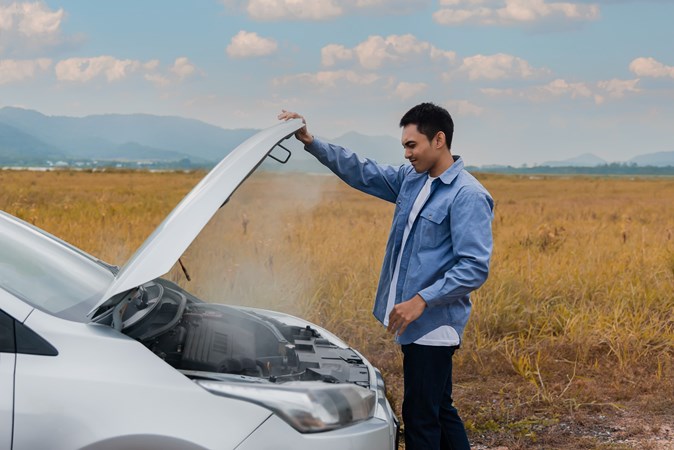
It’s highly unlikely that a breakdown will strike without warning. You’ll probably see a warning light or message, or a gauge showing an abnormal reading, before the breakdown occurs. If the battery’s dying, you may notice the car’s headlights become dimmer, the stereo gets quieter, or the aircon becomes less effective. You can head off the possibility of an in-journey breakdown by doing some basic car health checks at home.
Is the car still moving?
A breakdown probably won’t bring your car to an immediate halt. Only catastrophic mechanical failures generally do that, and the odds are vanishingly small. It’s much more likely you’ll be able to continue to a safe stopping place.
Modern cars have ‘limp mode’ that restricts the engine’s power to prevent the problem getting worse. If limp mode doesn’t kick in, you should still slow down as much as is safe to do so.
If you feel like you’re moving too slowly for the road, put the hazard lights on and keep as far left as possible – use the hard shoulder if there is one – and stop in the first safe place you find.
Stop in a safe place
When your car breaks down, you need to stop as far away from the road as possible. If there’s a nearby petrol station, motorway services, car park or just a really wide pavement, try to get there.
If that’s not possible, any layby, pull-in or gateway will do, if you can get the car fully off the road. It can be trickier on motorways and dual carriageways. You need to indicate left and move over as quickly as possible – be careful not to cut anyone off while doing so.
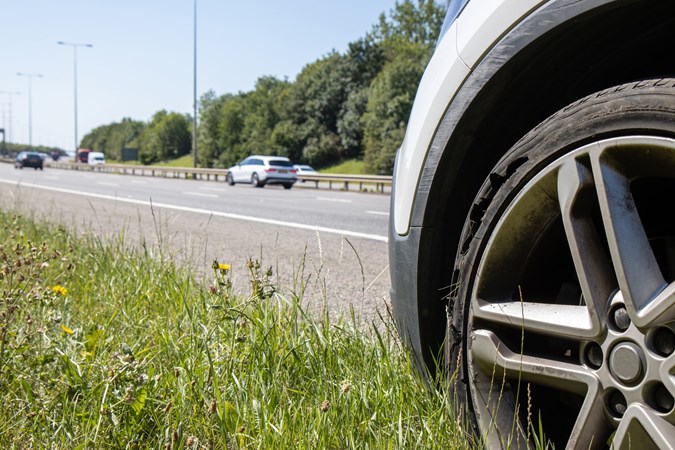
Stop on the hard shoulder or an emergency refuge area. If you’re on an all-lanes running smart motorway and can’t get to a refuge, put your hazard lights on and come to a halt gradually, as close to the barrier as possible and ideally within a hundred yards of a gantry so the cameras can see you clearly.
What if you can’t stop in a safe place?
If your car grinds to a halt before you can get to a safe place, you could end up in really a dangerous situation – particularly on a motorway. Put the hazard lights on and gradually bring the car to a halt if possible. Immediately call the emergency services.
On a single-carriageway road you should be able to get of the car safely but, if you’re in the right-hand lanes of a dual carriageway or motorway, stay in the vehicle with your seatbelt on. Bluntly, you stand a better chance of surviving another vehicle crashing into yours than being run over while trying to cross the carriageway. Even standing on the central reservation is extremely risky because there’s nowhere to go if an accident occurs.
Get yourself and your passengers out of harm’s way
If you stop on a hard shoulder, you need to get out of and away from the car as quickly as possible. Stop well over to the left and wait until there’s a long gap in the traffic before getting out, ideally from the car’s left side.
Once everyone’s out, get as far away from the car as you can. Motorway verges are often tricky terrain, so be careful. Keep children under control, leave animals in the car. Always have at least one pair of eyes on the oncoming traffic and be prepared to get out of the way if an accident occurs.
If there isn’t a hard shoulder, you ideally need to get behind the barrier, but getting out of the car will be extremely dangerous. Only do so if you think you can safely, for instance in a long gap in the traffic, ideally from the left-hand side. It’s not unknown for large vehicles to act as a shield, but don’t bank on that happening,
Be seen, stay safe
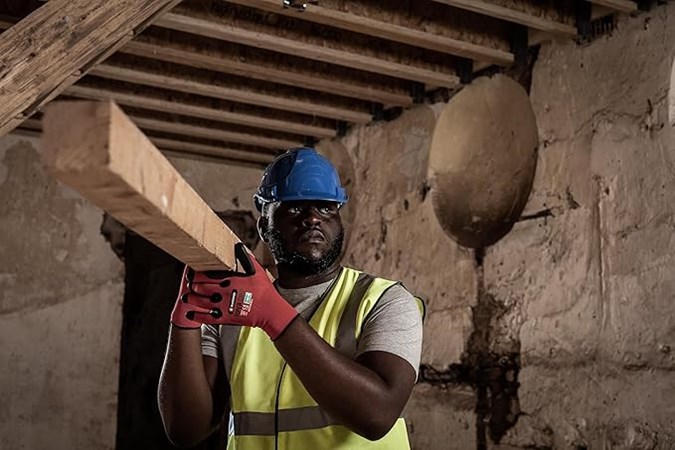

Pros
- Very reasonable price
- Huge range of sizes
Cons
- You may need different ones for the kids
Call for help
Once everyone is safely away from the traffic, you can call for your help. If you’ve stopped in a live traffic lane on any type of road – especially a motorway – call the police first. Use your car’s SOS button if it has one. A police or highway patrol will come out to deal with the traffic and keep you safe.
If you stop on a hard shoulder, it’s best to use an orange emergency telephone. The white road markers display an arrow pointing to the nearest one. Note the closest marker’s serial number as it helps the operator pinpoint your location. Walk on the verge if possible. Do not walk along a motorway for any reason other than reaching an emergency phone.
Otherwise, call out your breakdown service straight away. They may take a few hours to reach you, so be prepared to hunker down.
What if I don’t have a breakdown service?
If you’re not already a member of a breakdown service, you soon will be. Both the AA and RAC offer instant cover, so you can join and get a patrol sent to you in a matter of minutes.
If you don’t want to join, you can still get help, but the patrol’s call-out fee alone runs to three figures, then you pay for the car being fixed on top of that. If your car needs recovering, the bill can run to thousands of pounds. Passing patrols will stop to help if they’re at a loose end, but will charge non-members for the privilege.
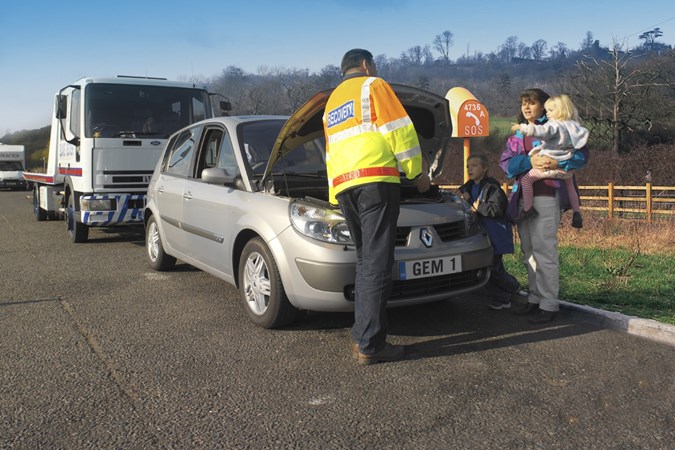
The police don’t like a car being stopped on a hard shoulder for long. If you can’t prove help is on the way, they’ll have your car recovered to the nearest services or junction, then send you the bill. And you’ll still have a broken car to deal with.
Set up a warning triangle
Once you know help is on the way, you can refocus on keeping yourself and your passengers safe. If you’ve stopped on a hard shoulder, the first thing to do is set up a red warning triangle at least 45 feet behind your car. If you’ve stopped on a live traffic lane on any type of road, it could be too dangerous to do so. In that case – or if you don’t have one – leave your car’s hazard lights on.
Avoid returning to the car
If you’re stood at the side of a motorway or dual carriageway, you should avoid returning to the car unless you’re retrieving a warning triangle. If you really need to, keep a close eye on the approaching traffic at all times – get a passenger to act as spotter if possible – and be as quick as you can.
Don’t go to the boot of the car unless absolutely necessary, and don’t go in front of the car at all before help arrives. It’s an extremely dangerous position to be in if an accident occurs.
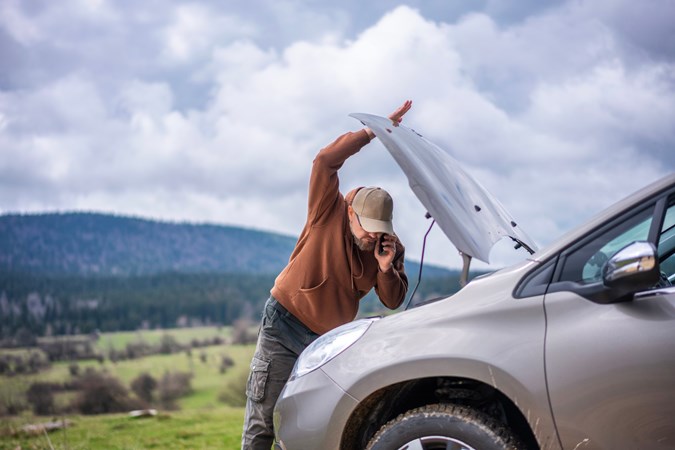
Do not walk along a motorway
We covered earlier than you should walk to the nearest emergency telephone if you break down on a motorway, heading in the direction shown on the white roadside markers. It’s illegal to walk along a motorway for any other reason. Even if there’s a service station a couple of hundred yards away, you cannot go there unless the markers direct you to.
Protect yourself from the elements
If you’ve stopped well away from the road, hunker down in the car while you wait for help. But you need to keep the ignition turned off because a flat battery would only compound your problems. Keep yourself warm (or cool), entertained, fed and watered. Here are a few things we recommend keeping in your car, just in case.
Just as useful in summer as winter
Pros
- Feels nice and soft
- Comes in many colours
Cons
- Only big enough for one person to wrap up in it
One of the best power banks Parkers has tested
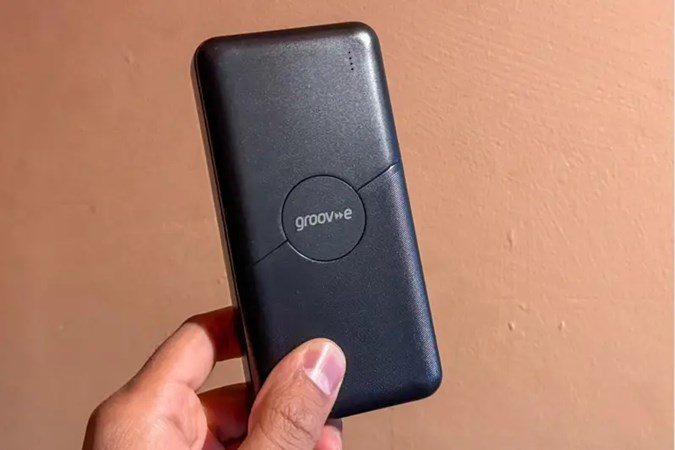

Read our full Groov-e Power Bank review
Pros
- Build quality
- Holds a lot of charge
Cons
- Limited selection of charging ports
A small torch with a very bright light
Pros
- Glovebox-friendly size
- Fully waterproof
Cons
- There are (much) cheaper alternatives
If you’re stood at the roadside, protect yourself from the elements. Seek shade on a hot day, get out the umbrella if it’s raining, wrap up warm if it’s cold. A bridge can be a good shelter. Don’t forget to eat and drink as much as you need to. And don’t be tempted to shelter in your car, in case an accident occurs.
Continuing your journey
With any luck, the breakdown patrol can fix your car and get you going quickly. Follow any advice they give you to the letter. But a fix isn’t always possible, in which case there are some logistical considerations to go through. We’ll come to that in a moment because first we should cover…
How to rejoin a motorway from the hard shoulder
You should accelerate up to 70mph or the prevailing traffic speed before rejoining lane one of a motorway from the hard shoulder. Indicate right as you accelerate and look for a big gap to pull into – just as you would joining the carriageway from a slip road. Pulling onto the carriageway at lower speed is extremely dangerous and could get you prosecuted for driving without due care and attention.
Getting your car recovered
If your car can’t be fixed at the roadside, it’ll have to be recovered. Breakdown services can take your car anywhere (if you have the right cover) and you have three options. You could have it taken to the nearest garage or your destination, but they may not be able to fix the car before you need to move on, and that can be a real headache. So it’s usually better to have the car taken home.
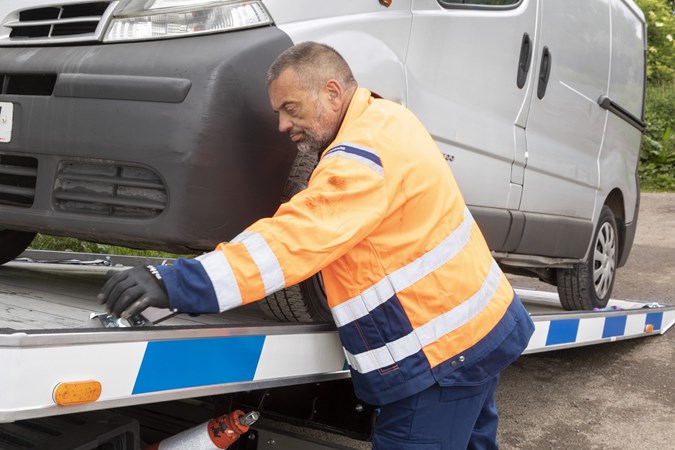
If you have a breakdown at night, the recovery service may take your car to their yard before continuing the journey the next day. They can drop you at a train station or hotel – your breakdown service may or may not cover the cost. If you get the car taken home during the night, you’ll still have to get it to a garage the next day.
Just so you know, we may receive a commission or other compensation from the links on this website - read why you should trust us.


